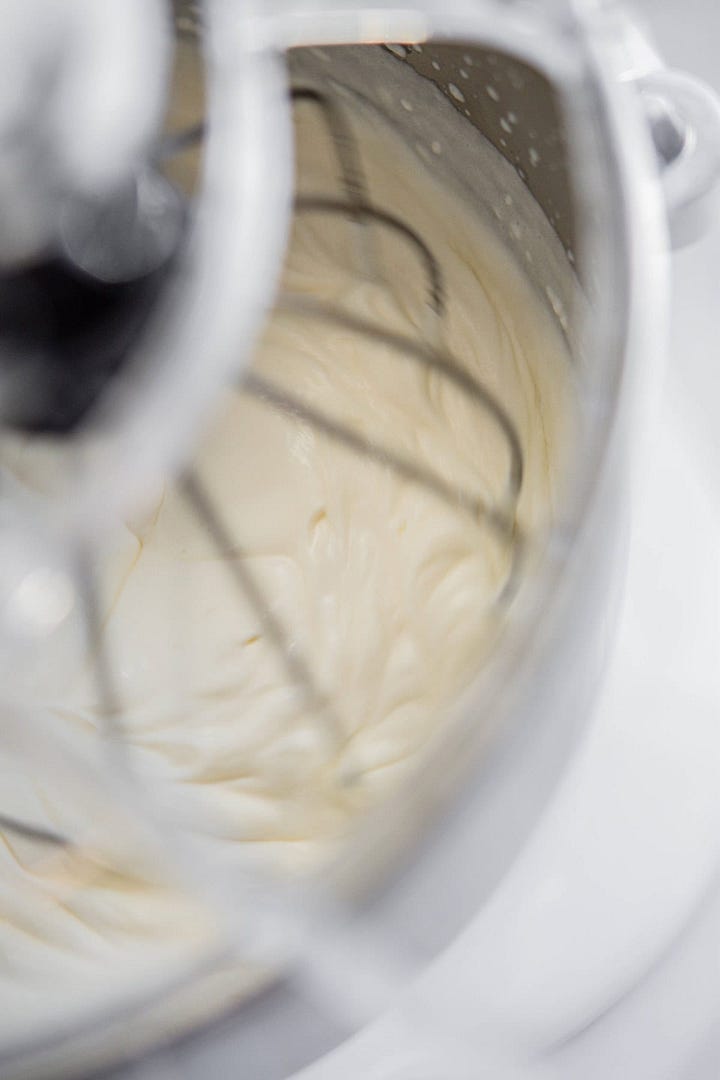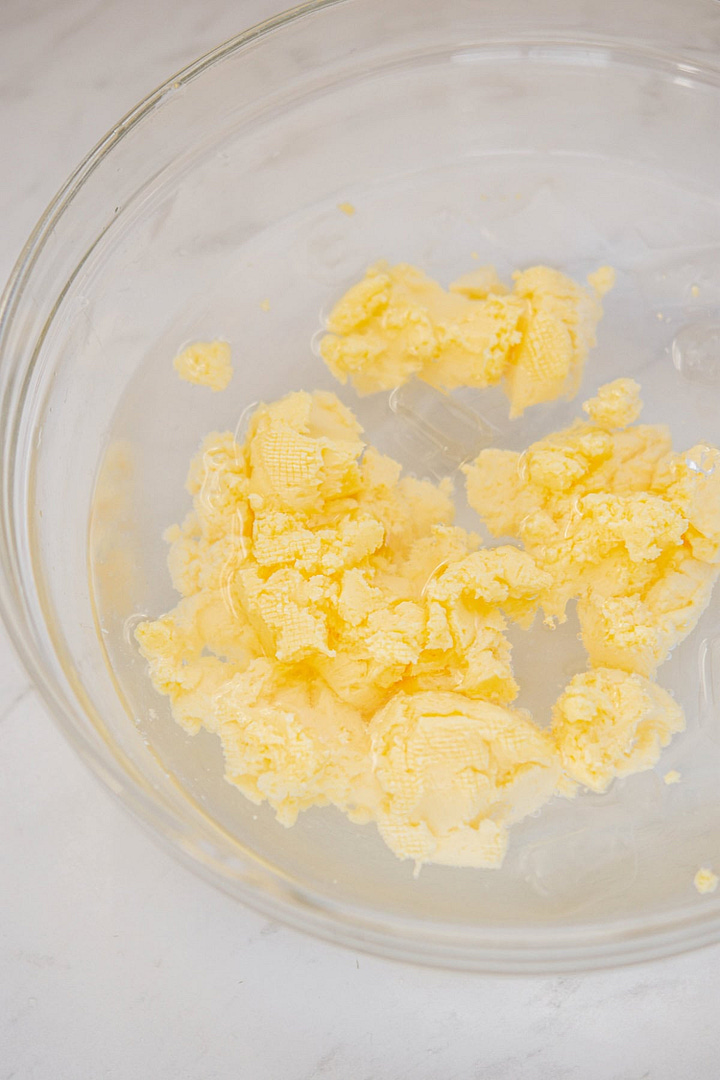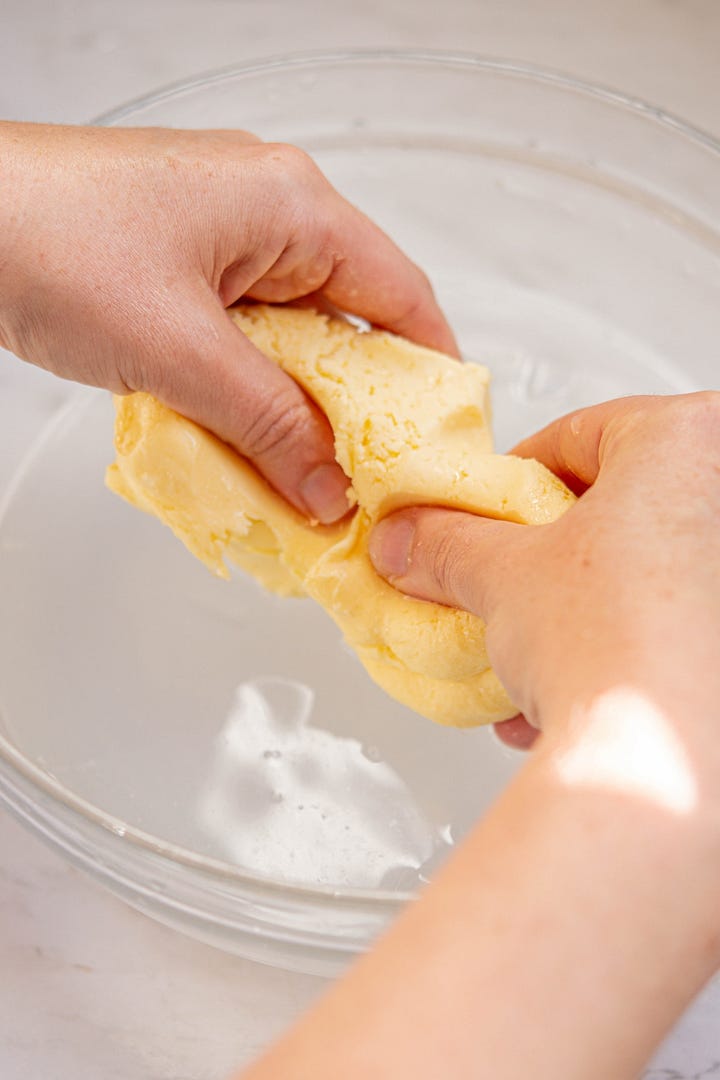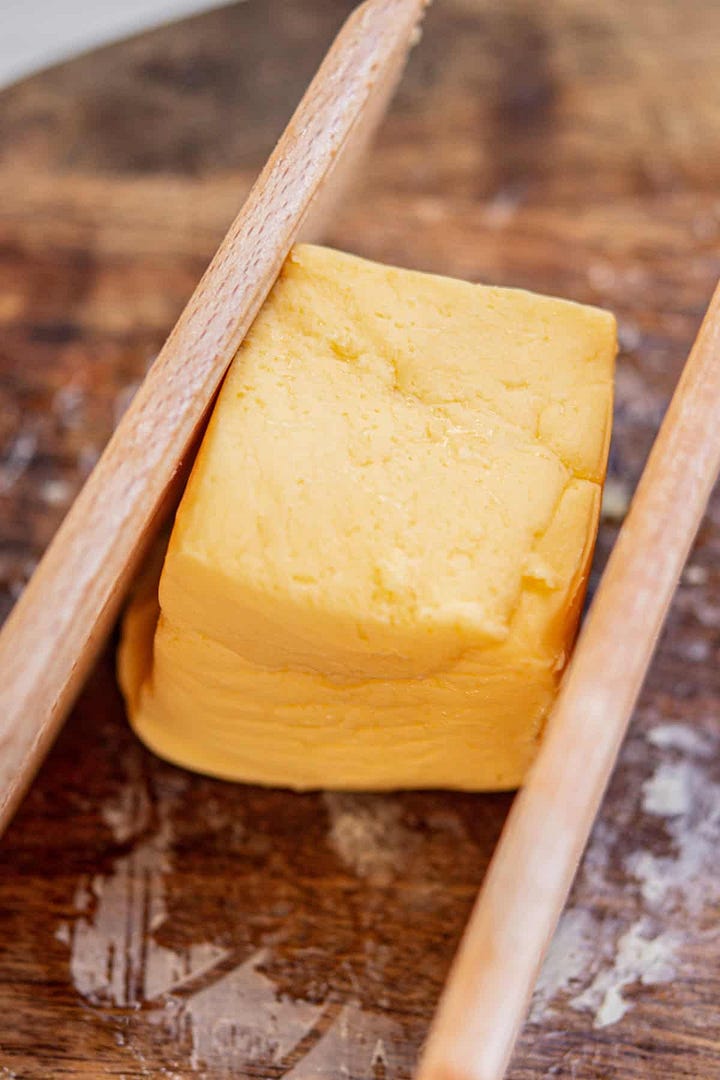Have you ever had cultured butter? I think it’s the most delicious butter ever! It has a beautiful light tang and a silky smooth texture. It’s really easy to make, too. You simply ferment cream with live culture (from yoghurt, kefir, or similar) and then whip it into butter. This fermenting process creates a more ‘buttery’ and rich result and adds a slightly tangy taste.
Making cultured butter at home also gives you the bonus of homemade buttermilk! I love drinking buttermilk as it is, but it’s also great in baking because the acid in it adds tenderness to your baked goods.
To make cultured butter, you’ll need heavy cream and fresh yoghurt (plain, with live cultures), or kefir yogurt or sour cream can be used; just ensure that what you use contains live cultures.
The cream needs time to ferment before being whipped – at least 24 hours but up to 48 hours.
You can find the printable recipe here.
Ingredients
500 ml heavy cream
50 g plain yoghurt with live cultures
Unrefined salt
Method
The first step is to ferment the cream. Pour cream into a bowl and add in yoghurt. Stir it together, cover it, and leave it at room temperature. At least 24 hours, but it can be as long as 48 hours. I use my stand mixer bowl because that’s what I use to whip the butter in later, and it comes with a lid.
Once the cream has fermented, it should smell lightly tangy and may have formed a thicker cream layer on the top.


Place the bowl in your stand mixer fitted with a whisk attachment. Alternatively, you can use a hand-held beater or pour the mixture into a food processor.
Start on low-medium speed, whisking until the cream thickens. If your mixer has a splash guard, use that.
The mixture will thicken, then become grainy. Keep on mixing and soon the yellow clumps of butter will form. This part can become a bit splashy so don’t have the mixer on too high.


Once the butter has formed it’s time to to strain off the buttermilk. Tip the mixture into a seive over a bowl to catch the milk. Save the buttermilk in a jar in the fridge or the freezer to use later.
Place the butter clumps back into the mixing bowl whisk it again, or use your hands to squeeze and knead the butter to remove more buttermilk.


Now rinse the formed butter in the seive under cold water, then place it into a bowl of ice-cold water.
You can use your hands to squeeze and knead the butter to remove the remaining buttermilk. Refresh the cold water and repeat this process until the water in the bowl is clean. Add ice cubes as needed to ensure the water stays cold throughout this process.


Salting the butter – If you want to add salt to the butter for storing purposes and taste, weigh the butter first. Then, flatten it on the bench and sprinkle over a little unrefined salt—around 1.5% percent of the total butter weight. Fold the butter over itself a few times to incorporate the salt. If the butter has warmed too much, place it in the fridge and let it chill.
Now use butter paddles or wooden spoons to flatten and squash the butter over and over again. This removes those last remaining drops of buttermilk. Take your time doing this because any buttermilk not removed can cause the butter to go rancid faster.
Once all the buttermilk has been removed, use the paddles to shape the butter into a block. If you don’t have paddles, you can wrap the butter in parchment paper and roll it into a shape.
Store the butter, wrapped in parchment paper or plastic wrap in the refrigerator for up to 3 weeks. The butter can also be frozen for up to 3 months.


If you make it, I’d love to know! :)



